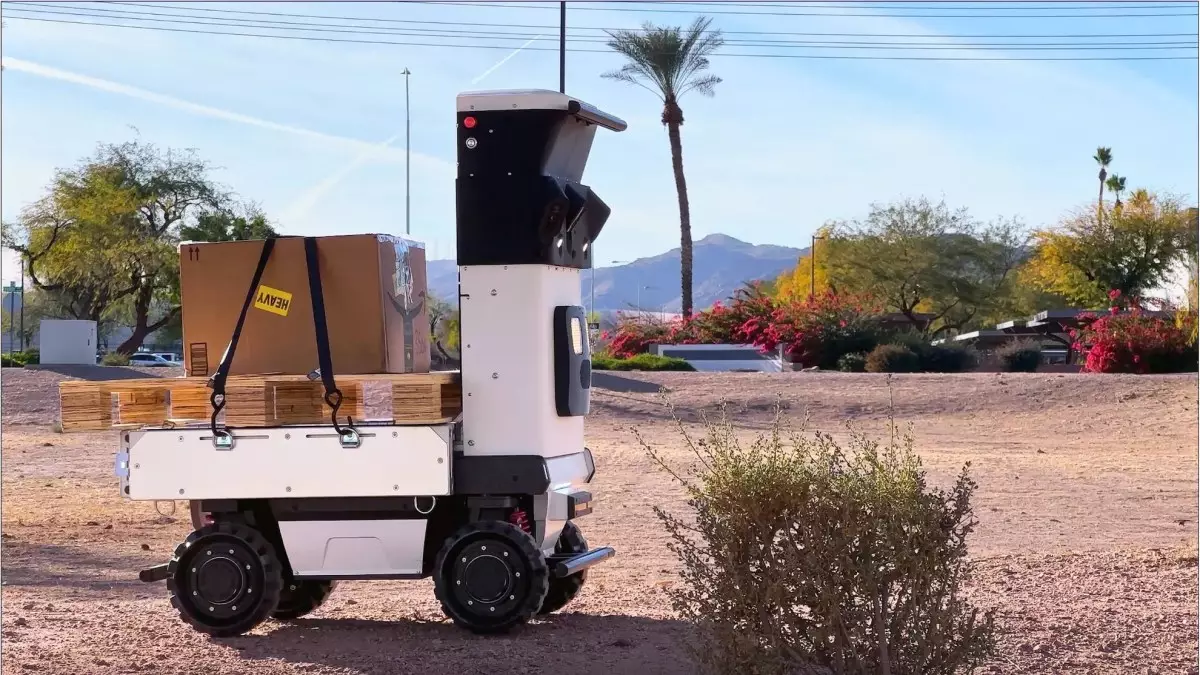The evolution of autonomous technology continues to redefine the boundaries of automation, and Cartken stands at the forefront of this transformative wave. Originally rooted in delivering food on college campuses and in Tokyo’s bustling thoroughfares, the startup has decisively shifted focus toward industrial applications. While at face value this may appear as a simple pivot, the strategic depth and potential impact of this move reveal a much more profound narrative about the future of manufacturing and logistics.
What distinguishes Cartken’s approach is its seamless adaptation of existing urban delivery solutions to industrial environments. The transition isn’t mere repurposing; it’s a paradigm shift that leverages years of on-the-ground experience navigating unpredictable terrains and obstacles in densely populated areas. Thanks to advanced machine learning algorithms honed through real-world food delivery, these robots demonstrate remarkable agility in complex, cluttered factory zones and laboratories—settings traditionally dependent on manual labor and legacy equipment.
The significance lies in the company’s capacity to transfer and scale the AI infrastructure from one domain to another. This technological agility reduces development time and minimizes costs, making robotics more accessible and appealing to industries that have historically been hesitant due to high capital investment or technological complexity. Consequently, Cartken essentially bridges the gap between consumer-facing urban mobility and the high-demand, precision-driven environment of manufacturing and logistics.
Industrial Adoption: A Strategic Opportunity Raced with Innovation
The recent move to partner with ZF Lifetec, a prominent player in automotive manufacturing, marks a pivotal milestone. This industrial counterpart’s adoption of Cartken’s robots signals a validation of the startup’s core technology, beyond its initial niche. Such early enthusiasm suggests that we may now be witnessing the dawn of a new industrial revolution—one driven by autonomous systems capable of streamlining material flow, reducing human labor, and optimizing production timelines.
Cartken’s development of specialized models like the Cartken Hauler, capable of bearing up to 660 pounds, underscores its commitment to accommodating the demanding needs of factories and warehouses. These robots don’t just move lightweight items; they are designed to handle substantial loads, operate reliably across diverse conditions, and integrate smoothly into complex supply chains. The AI’s ability to adapt to indoor and outdoor settings, combined with obstacle-aware navigation from Tokyo street data, demonstrates a versatile and resilient platform that industrial clients find increasingly indispensable.
Moreover, the company’s strategic partnership with Mitsubishi and its subsidiary Melco Mobility Solutions in Japan signal a broader acceptance of autonomous robotics. The purchase of nearly 100 Hauler robots, especially in a market as discerning as Japan, affirms that these innovations are not just technological experiments but serious business tools. This not only validates Cartken’s growth trajectory but also highlights the accelerating global shift toward Industry 4.0.
Challenging the Status Quo: Why This Shift Is Both Bold and Necessary
Traditionally, industrial settings have been resistant to automation due to the complexity and variability of environments, safety concerns, and high implementation costs. Yet, Cartken’s success demonstrates that the tides are turning. Their robots’ ability to adapt through robust AI training, inspired by urban delivery routes, provides a compelling proof point that autonomous systems can thrive in less predictable—yet highly valuable—spaces.
The core of this technological shift is not solely about replacing manual labor but about unlocking operational efficiencies that were otherwise inconceivable. Robots capable of navigating intricate factory layouts, handling heavy loads, and operating seamlessly between indoor and outdoor spaces could drastically reduce downtime, improve safety, and elevate productivity levels. This is no longer a distant vision of the future; it is a current reality gaining momentum.
However, a critical perspective must acknowledge ongoing challenges. Safety regulations, integration with existing enterprise systems, and workforce displaced by automation pose serious questions. But what’s arguably more critical is that vendors like Cartken proactively address these hurdles through strategic partnerships and technological robustness. They are demonstrating that autonomous robotics can be more than a costly experiment—it’s a competitive advantage for forward-thinking companies willing to embrace change.
Driving the Future of Work with Autonomous Innovation
This shift towards industrial automation reflects a broader, undeniable trend: robotics are no longer confined to static, pilot projects; they are becoming integral cogs within global supply chains. Companies that recognize this early will gain significant leverage in the competitive landscape. Cartken’s journey exemplifies how innovation, rooted in practical urban applications, can evolve into a scalable solution with profound industrial implications.
As these robots become increasingly refined and widespread, the definition of skilled and unskilled labor could be fundamentally reinterpreted. Intelligent automation will handle repetitive, strenuous tasks, freeing human workers for more strategic, creative, and supervisory roles. This shift promises not just efficiency gains but a genuine transformation in workforce dynamics and operational philosophies.
The rise of autonomous robots like those from Cartken signals a new chapter—one that balances technological ambition with pragmatic utility. It challenges entrenched norms, promises economic gains, and pushes industries toward smarter, safer, and more sustainable futures.

